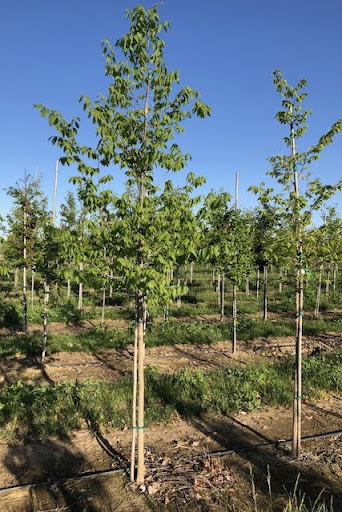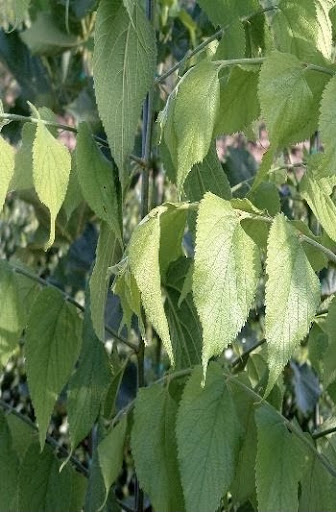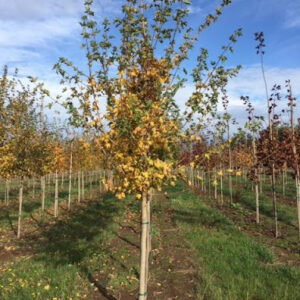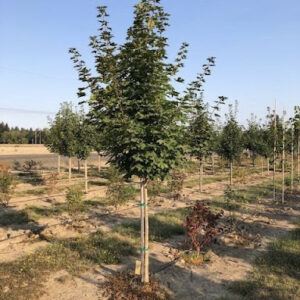Celtis occidentalis -Common Hackberry Tree
$250.00
Botanical Name: Celtis occidentalis
Alternate Name: Western Hackberry
The Hackberry (Celtis occidentalis) is a common tree and has many names, such as Common Hackberry, Western Hackberry, Nettle Tree, and Sugarberry. It is a medium to large deciduous tree that grows to a height of 40-60 feet with a spread of 40-60 feet.
The Common Hackberry tree forms a rounded crown and can grow as wide as it does tall. The branches have an upright growth habit that can arch gracefully sideways. It can be found growing in mixed deciduous forests and near streams in the midwest and eastern United States.
The leaves of the Common Hackberry are ovate and hang down from the branches. They are glossy and light or mid-green with serrated edges and an uneven base – similar to Elm leaves.
The flowers are modest and don’t put on a noticeable display. The male flowers appear in clusters and the female flowers are solitary. The fleshy purple fruits that follow the female flowers are attractive to birds. They are also sweet and edible to people.
The gray bark of the Common Hackberry has an interesting texture and forms thick, irregular ridges and wart-like growths over a smooth background.
This tree is a useful and adaptable landscape tree. It is tolerant of drought conditions and urban pollution, making it ideal for use as a street tree. Its dense foliage, wide crown, and stature also make it well suited for use as a shade tree. It can also be planted to prevent erosion near streams and rivers and therefore works well in cultivation in rain gardens.
Product Dimensions
The purchased tree will be within the ranges below. If you require a specific size, please call us at
(503)585-8337
Please review Product shipping dimensions to ensure size of vehicle used for pickup of tree is sized correctly.
Click here for more information.
- Caliper Range p
- 1 3/4"-3"
- Height Range p
- 8-12'
| Shape |
Rounded
|
| Flower Color |
Green
|
| Flowering Time |
April, May
|
| Fall Color |
Yellow
|
| Growth Rate |
Fast
|
| Uses |
Lawn Tree, Rain Gardens, Shade Tree, Street Tree, Urban Landscapes
|
| USDA Zones |
2, 3, 4, 5, 6, 7, 8, 9
|
| Mature Height |
40'-50', 50'+
|
| Mature Width |
40'+
|
| Exposure |
Full Sun, Partial Shade
|





